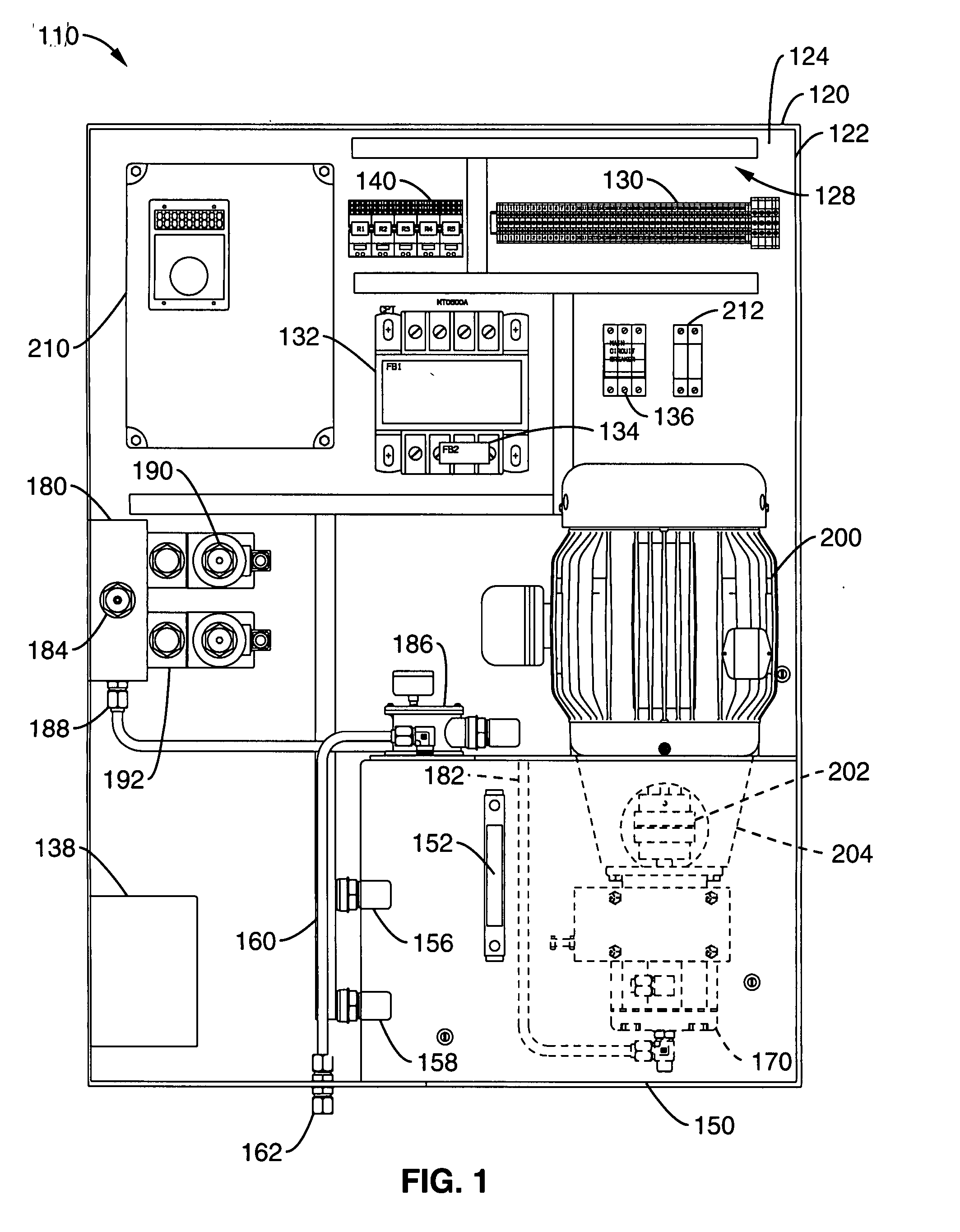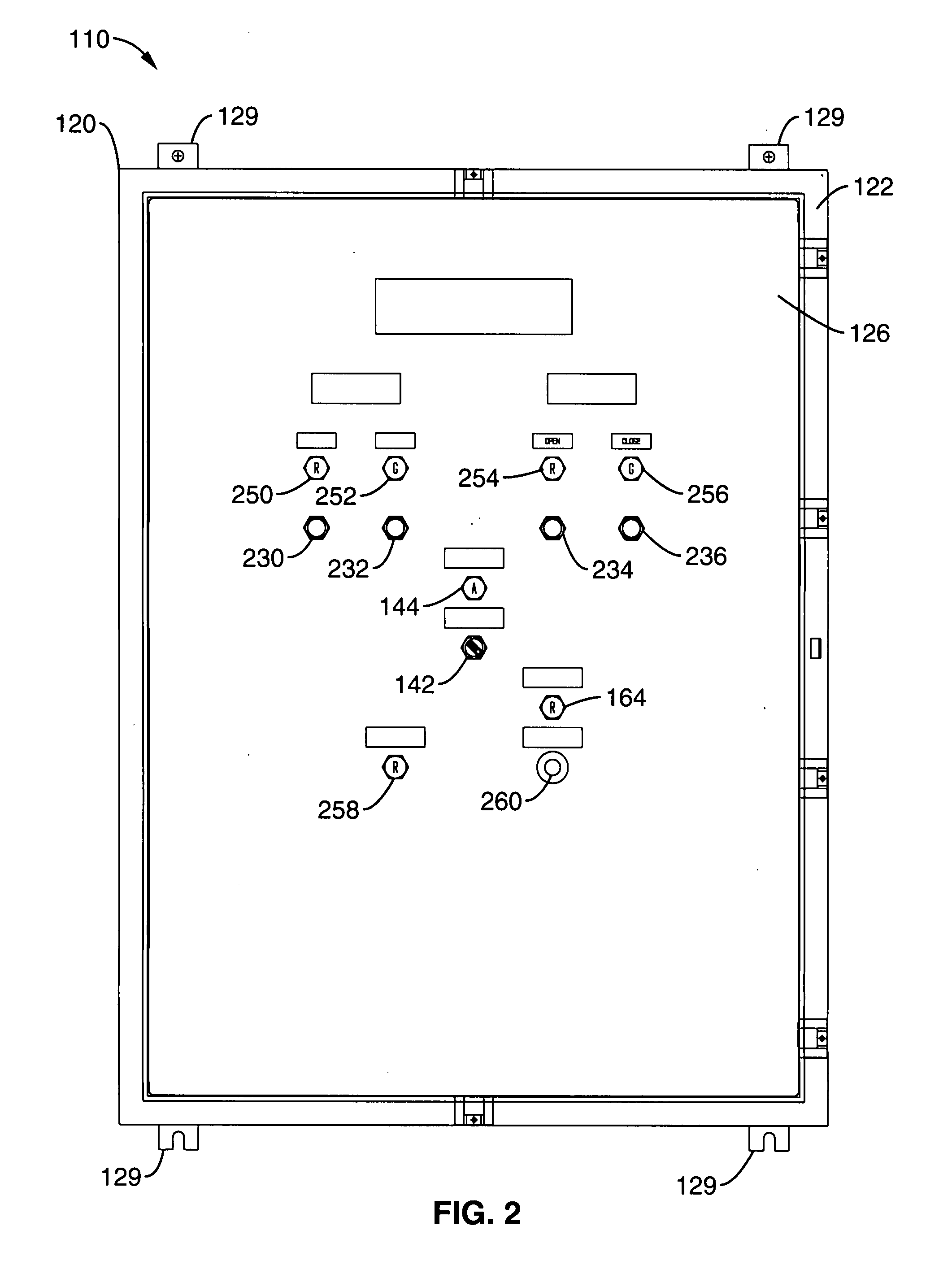Actuator control system and method
a control system and actuator technology, applied in the direction of clutches, servomotor circuits, fluid couplings, etc., can solve the problems of complex and expensive high-pressure hydraulic piping networks, large power losses through the piping network, and major expense, so as to eliminate centralized high-pressure hydraulic systems and costly high-pressure plant-wide hydraulic plumbing
- Summary
- Abstract
- Description
- Claims
- Application Information
AI Technical Summary
Benefits of technology
Problems solved by technology
Method used
Image
Examples
Embodiment Construction
[0026] Considering the drawings, wherein like reference numerals denote like parts throughout the various drawing figures, reference numeral 110 is directed to an electronic variable speed (EVS) actuator control system.
[0027] In general, and referring to FIGS. 1 through 4, an embodiment of the invention provides an electronic variable speed (EVS) actuator control system 110 enclosed in a NEMA electrical enclosure 120 and powered from an external power supply 300 for providing electronic velocity and force control of actuation of at least one external high-pressure hydraulic linear and / or rotary actuator 400 working on work piece 410. The electrical enclosure 120 is comprised of a four sided construct 122 extending substantially perpendicularly between a back cover 124 and a front cover 126 wherein an internal cavity 128 is defined by the four sided construct 122 and back cover 124 and is accessible through front cover 126 shown in FIG. 2. The NEMA electrical enclosure 120 can be mo...
PUM
 Login to View More
Login to View More Abstract
Description
Claims
Application Information
 Login to View More
Login to View More - R&D
- Intellectual Property
- Life Sciences
- Materials
- Tech Scout
- Unparalleled Data Quality
- Higher Quality Content
- 60% Fewer Hallucinations
Browse by: Latest US Patents, China's latest patents, Technical Efficacy Thesaurus, Application Domain, Technology Topic, Popular Technical Reports.
© 2025 PatSnap. All rights reserved.Legal|Privacy policy|Modern Slavery Act Transparency Statement|Sitemap|About US| Contact US: help@patsnap.com



